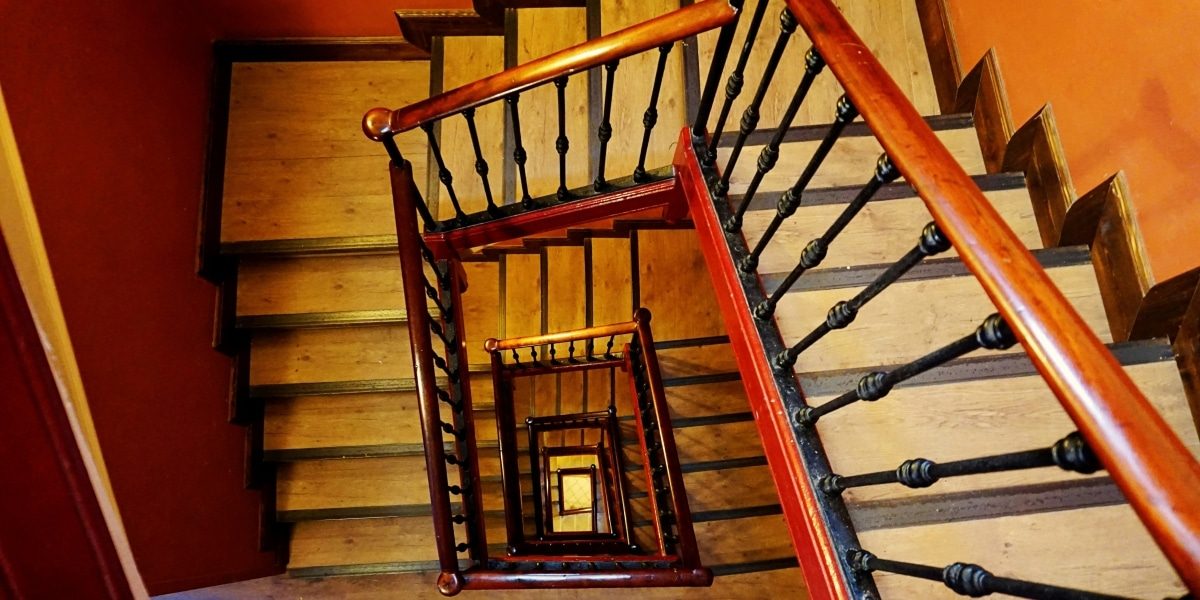First, there are smoke alarms, a security system, and at least heavy door locks. Among the commonly unconsidered safety installments at home is the inclusion of handrails. From negotiating stairs and walking along corridors to getting into the shower, handrails play a considerable role in making our houses much safer, particularly for children, older adults, and those with challenges in their ability to move around.
However, it is also important to note that handrails give people confidence apart from the practical perspective because they offer stability and support where needed most. Handrails can help avert falls in the most hazardous places within the home. With this said, let’s take a closer look at why handrails are very much essential to the safety of your household.
A Vital Support for Older Adults and Children
With increasing age, balance may become difficult for older adults. Arthritis, decreased muscle strength, and vision loss can cause instability. Handrails offer a steady support point, helping seniors navigate stairs, ramps, or uneven surfaces more securely.
Similarly, young children are still developing their motor skills and coordination, which may make stairs or even raised platforms tricky to navigate. Handrails give kids something to hold onto, making them feel secure and protected while moving around. An adequately installed handrail provides the necessary grip and stability for all ages to move about the house safely.
Preventing Slips and Falls
The most common household accidents are falls, which occur very commonly on stairs and slippery surfaces. A misstep or momentary loss of balance can cause serious injuries, especially to some of the most vulnerable members of the family. A handrail provides a safety net, giving an easy way of regaining balance and avoiding the fall altogether.
Handrails provide a convenient support option for indoor staircases, outside steps, and high-risk areas like bathrooms, where floors can sometimes become slippery. Placing handrails near bathtubs, showers, and toilets can enhance the practicality and safety of these spaces.
The Right Placement Makes All the Difference
Handrails can only be adequate if installed correctly and placed where needed. That includes paying attention to areas of your home that pose a greater risk of slips or falls. Consider the installation of handrails along staircases, hallways, ramps, or bathrooms. For outdoor spaces, handrails can make walkways, porches, and decks much safer, especially during rainy or icy weather.
The height and graspability of the handrail are just as important as its placement. A handrail that’s too high or hard to grasp won’t be that good, so it would be better to choose designs that suit your household members’ needs. Smooth, sturdy, and ergonomically designed handrails provide better support and comfort for anyone who uses them.
If you’re unsure about the type of handrails you need, you can visit the site for expert guidance on choosing the options for your home. Professionals can help you assess your space and determine where handrails will be most beneficial.
Boosting Accessibility for All
The purpose of a handrail is not only to provide safety but also to enhance accessibility for all individuals. To people with physical disabilities or temporary injuries, it could mean the difference between independence in their own homes and dependence on others. This becomes important during navigation, either up or down stairs or ramps.
A house that is concerned with accessibility makes sure the environment is comfortable and secure for every individual. Installing handrails will be an easy and efficient means to help your home meet the demands of every individual and even visitors who require more support.
Enhancing Peace of Mind
Safety is often as much about peace of mind as physical protection. Knowing that sturdy, well-placed handrails in your home can reduce anxiety about slips, trips, and falls, especially for those caring for young children or elderly family members.
For example, installing handrails near commonly used stairs or pathways can support family members with mobility challenges. This support can make it easier to move around the house and promote a sense of independence.
Handrails as a Stylish Addition
While handrails are, first and foremost, a safety feature, they can also add a touch of style to your home. Handrails today come in an enormous variety of materials, finishes, and designs that can complement your home’s overall aesthetic. Whether you’re going for sleek-looking stainless steel, the warmth of wooden handrails, or even a modern glass finish, there is something to suit every style preference.
Custom handrails can also be tailored to fit unique spaces in your home, combining functionality with elegance. By choosing handrails that match your decor, you’re prioritizing safety and enhancing the look and feel of your living spaces.
A Simple Yet Effective Investment
One of the most essential benefits of handrails is that they are a minimal investment for such a significant return. Handrails are a low-cost renovation with minimal maintenance thereafter. The advantages of this feature will last much longer. Handrails help the home be more accessible, comfortable, and safer, making it worth investing in for any family.
Whether you’re renovating an existing home or starting a new build, including handrails can be an important consideration. Professional installation ensures they are securely fitted and built to last.
Conclusion
Handrails are often overlooked but can be essential in making a home more accessible and user-friendly. They offer practical support for navigating spaces and can also serve as a design element that complements the style of your home.
Well-made handrails can enhance the comfort and usability of your home by providing added stability. Whether used indoors or outdoors, they offer support for navigating spaces more easily. Taking steps to install them can contribute to a safer living environment.
Published by Mark V.

















